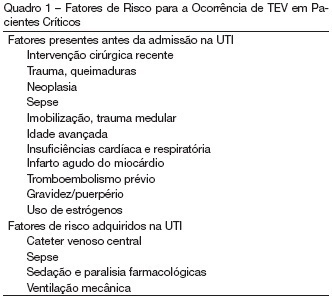Abstract
Rev Bras Ter Intensiva. 2015;27(2):185-189
DOI 10.5935/0103-507X.20150031
This is a case report of a 43-year-old Caucasian male with end-stage renal disease being treated with hemodialysis and infective endocarditis in the aortic and tricuspid valves. The clinical presentation was dominated by neurologic impairment with cerebral embolism and hemorrhagic components. A thoracoabdominal computerized tomography scan revealed septic pulmonary embolus. The patient underwent empirical antibiotherapy with ceftriaxone, gentamicin and vancomycin, and the therapy was changed to flucloxacilin and gentamicin after the isolation of S. aureus in blood cultures. The multidisciplinary team determined that the patient should undergo valve replacement after the stabilization of the intracranial hemorrhage; however, on the 8th day of hospitalization, the patient entered cardiac arrest due to a massive septic pulmonary embolism and died. Despite the risk of aggravation of the hemorrhagic cerebral lesion, early surgical intervention should be considered in high-risk patients.

Abstract
Rev Bras Ter Intensiva. 2006;18(3):311-315
DOI 10.1590/S0103-507X2006000300015
BACKGROUND AND OBJECTIVES: Gas embolism is an iatrogenic injury that has high morbidity and mortality. It's a complication of clinical-surgical procedures, and it's necessary that the health professionals know this entity. The aim of this study was to realize a review of the gas embolism, considering its pathophysiology, diagnosis and therapeutics aspects. CONTENTS: This article revises conceptually the gas embolism, dividing it in arterial and venous. Relate the mains physiopathology, diagnosis and therapeutics characteristics of the arterial and venous embolism. In addition, it's also approach the paradoxical embolism, event that occurs by conversion of a venous embolism to an arterial embolism. CONCLUSIONS: Gas embolism is an important complication, and it's present in many medical specialties. Knowledge about its physiopathology, and its diagnosis and therapeutic methods is essential to guarantee higher safety to the patients.

Abstract
Rev Bras Ter Intensiva. 2007;19(2):237-241
DOI 10.1590/S0103-507X2007000200017
BACKGROUND AND OBJECTIVES: Amniotic fluid embolism is a rare complication of pregnancy whose physiopathology is not completely known and still not frequently remembered by intensive care physicians and obstetricians. The main aim of this case report was to emphasize the need of better knowledge of this disease by physicians. CASE REPORT: A 15 years old, primigravida, 35th week of gestation was admitted in our intensive care unit (ICU) with a sudden respiratory distress. Soon after admission she was intubated and put on mechanical ventilation. After stabilization she was transferred to the operating room and a cesarean section was undertaken. During the operation, instead of fluid reposition with crystalloids in large amounts, her hemodynamic status deteriorated and it was necessary to use vasoactive drugs. After three days on mechanical ventilation she was successfully weaned and discharged from the intensive care unit (ICU) after 6 days. She and her baby were discharged from hospital on13th day of hospitalization. CONCLUSIONS: Amniotic fluid embolism is a rare and catastrophic complication of pregnancy, at least in its classic presentation. It is characterized by acute respiratory distress, hemodynamic compromise and coagulopathy that occur during or within 30 min after labor. Diagnosis is by exclusion of other conditions of pregnancy or diseases that can be aggravated during pregnancy such as eclampsia, sepsis, pos-partum cardiomyopathy, anaphylaxis, pulmonary thromboembolism, transfusion reactions, anesthetic complications and mitral stenosis. There is growing evidence that we have a spectrum of manifestation which can be more common that in the classic ones. The treatment is supportive of vital functions, such as mechanical ventilation, fluid reposition, vasoactive drugs and fresh frozen plasma as necessary. The intensive care physicians and obstetricians should be aware of this disease in order to make early diagnosis and prompt treatment.